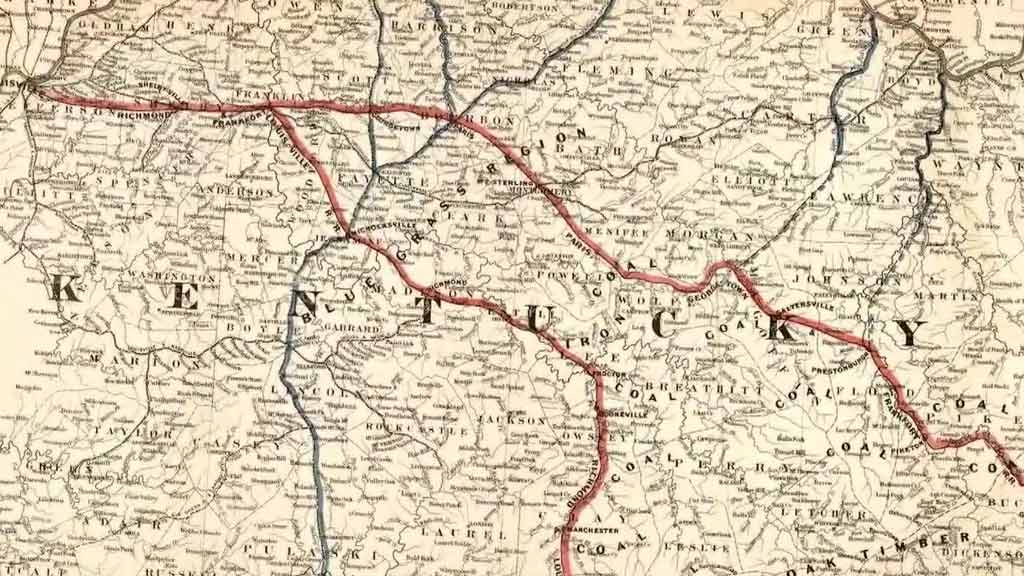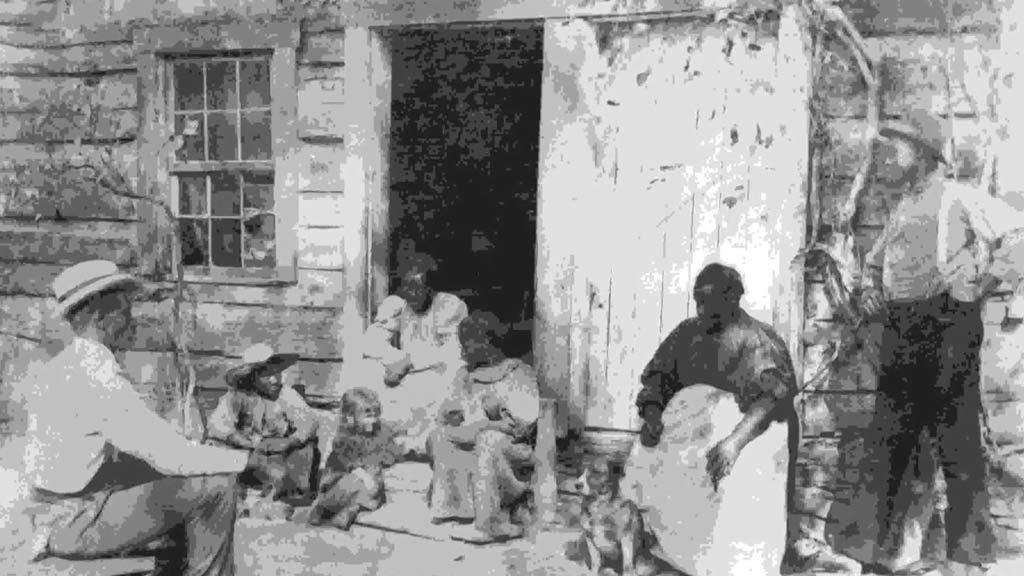Located in the heart of Kentucky, Salem boasts a rich tapestry of history that dates back to the early 19th century. From its modest beginnings, the city has witnessed significant events that have shaped its unique character.
Notably, in 1864, Capt. Hiett and his men faced a dramatic skirmish against Confederate forces, marking a pivotal moment in Salem’s storied past.
Salem’s historical population trends further illustrate its evolving narrative. From just 233 residents in 1830 to a bustling community of 593 by 1970, the city has grown and adapted through the decades.
As you delve into Salem’s history, you’ll uncover tales of resilience, growth, and transformation that continue to define this charming Kentucky city.
Early History of Salem, Kentucky
Salem, Kentucky, like many towns in the United States, has a rich history that includes its involvement in significant events such as the Civil War.
While Salem may not have been a major battleground, its proximity to key areas meant it felt the effects of the conflict. Additionally, its early history sheds light on the cultural heritage of the region.
Founding and Early Settlements
Salem, Kentucky, originated in the early 19th century. The United States Census Bureau records in 1830 show Salem had 233 residents.
Early settlers were drawn by fertile land, strategic location, and potential for commerce. During this period, small farms and trades began to dot the landscape, laying the foundation for a close-knit community.
Churches and schools soon followed, becoming central to town life. By the late 19th century, Salem saw significant growth with the arrival of the railroad, boosting its economy and connectivity.
Key Historical Events
Salem’s history includes pivotal events that shaped its development. In 1864, Capt. Hiett and 35 men engaged 300 Confederates and guerrillas in a skirmish within Salem.
The battle lasted from 7:00 a.m. to 11:00 a.m. Rebel forces lost nine men and left two severely wounded. Such conflicts exemplify the town’s strategic importance during the Civil War era.
The census data further chronicles Salem’s journey through milestones, reflecting changing demographics:
- 1840: Population decreased to 171.
- 1860: Rose slightly to 192.
- 1870: Jumped significantly to 740.
- 1880: Reached 1,640, indicating rapid growth.
- By 1970: Settled at 593 residents.
Geographic Landscape Salem Kentucky

Salem, Kentucky, is situated in the western part of the state, within Livingston County.
Here’s a breakdown of its geographic landscape:
Average Climate in Salem, Kentucky
Salem experiences a humid subtropical climate. Summers are warm, with average highs around 89°F (32°C) in July. Winters are mild, with January lows averaging 28°F (-2°C).
Annual precipitation is about 47 inches (119 cm), contributing to lush vegetation and fertile soil. Rainfall is fairly distributed through the year, supporting agriculture and local flora.
The area occasionally experiences severe weather, including thunderstorms and tornadoes, particularly in spring and early summer.
This climate supports crops such as corn, soybeans, and tobacco, which have been staples of Salem’s agricultural economy for generations.
Natural Features and Location
Salem, located at coordinates 37°15′53″N 88°14′28″W, spans an area of 0.8 square miles (2.1 km²), all land. The town lies near the Ohio River, offering scenic views and vital water resources.
Rolling hills and forests surround Salem, creating a picturesque landscape. These features provide opportunities for outdoor activities like hiking and fishing.
The rich natural landscape makes Salem a haven for nature enthusiasts. The town’s proximity to the Ohio River not only enhances its aesthetic appeal but also contributes significantly to its history and economy.
Impact on Local Community
The geographic landscape significantly shapes Salem’s community dynamics. Fertile soil and favorable climate conditions support agriculture, a primary local industry.
Proximity to the Ohio River facilitates trade and transportation, bolstering economic activities. Natural beauty attracts tourism, contributing to the town’s revenue and promoting community engagement through local events and outdoor activities.
Salem’s history is also enriched by its early settlements and notable landmarks. The town is home to several historic buildings and sites, preserving its rich cultural heritage.
The blend of agricultural prosperity, historical significance, and natural allure makes Salem a unique and vivid community worth exploring.
Demographics Over the Years

Understanding the demographics of Salem, Kentucky, over the years provides insight into the town’s population trends and changes.
Population Growth and Changes
Salem, Kentucky, has experienced several shifts in population size since the early 19th century. According to historical Census data, Salem’s population began at 233 in 1840 and saw a slight decrease to 171 by 1860.
By 1870, the city experienced a significant increase, reaching 740 residents. The population surged again in 1880, with a peak of 1,640 people.
However, the 20th century saw fluctuations, with a decrease to 208 in 1900, then a rise to 320 by 1910. In 1970, Salem recorded 593 residents, reflecting its changing dynamics over the years.
Cultural and Ethnic Composition
The cultural and ethnic composition in Salem has evolved alongside its population changes. Originally settled by European immigrants, primarily of British and German descent, the demographic makeup began diversifying over time.
While historical records indicate a predominantly white population, newer trends suggest a gradual increase in cultural diversity.
This shift is exemplified through various community events and cultural festivals that highlight Salem’s growing multicultural landscape. Despite these changes, Salem maintains its small-town charm and tight-knit community spirit.
Historical Landmarks and Sites
Salem, Kentucky, boasts a rich history with several historical landmarks and sites that offer insights into its past.
Here are some notable ones:
Churches and Cemeteries
Salem is home to several historical churches and cemeteries that tell the story of its early settlers. These sites offer a glimpse into the town’s religious heritage and the lives of its early inhabitants.
Salem Baptist Church, established in the 19th century, stands as a testament to the town’s enduring faith community. The adjoining cemetery holds the graves of many early settlers, including veterans of the Civil War.
Another notable site is the Salem Methodist Church, which has been a focal point for community gatherings since its inception.
Historic Homes and Buildings
Salem’s historic homes and buildings reflect its rich architectural heritage. The town boasts several well-preserved structures from the 19th and early 20th centuries.
One such example is the Old Courthouse, where Capt. Hiett and his men made their stand during the Civil War battle in 1864. This building is a significant landmark that witnessed a pivotal moment in Salem’s history.
Additionally, several Victorian-style homes line Salem’s main streets, showcasing intricate woodwork and period details that tell the story of a bygone era.
Frequently Asked Questions
What is the historical significance of Salem, Kentucky?
Salem, Kentucky, traces its roots back to the early 19th century and is noted for its key historical events, including an 1864 Civil War skirmish and a significant battle at the Old Courthouse.
Who were the early settlers of Salem, Kentucky?
Salem was initially settled by European immigrants, and over time, it diversified in terms of population and demographics.
What are some notable historical landmarks in Salem, Kentucky?
Key landmarks include Salem Baptist Church and Salem Methodist Church, both of which date back to the early days and have cemeteries holding graves of early settlers and Civil War veterans.
What happened during the Civil War in Salem, Kentucky?
Salem saw an intense battle at the Old Courthouse on August 7, 1864, led by Capt. Hiett, demonstrating the town’s strategic importance and resilience during the Civil War.
How has Salem, Kentucky’s population evolved over time?
Salem has seen significant demographic changes since its founding, initially being a European immigrant settlement and later becoming increasingly diverse.
Why is Salem, Kentucky’s history important for understanding its present?
Salem’s unique history, including its role in the Civil War and its architectural and cultural heritage, continues to shape its identity and relevance today.
Conclusion
Salem, Kentucky, has a rich and diverse history that resonates through its various landmarks and events. From its early settlement by European immigrants to its involvement in Civil War skirmishes, the town has seen significant developments over the years.
On August 7, 1864, Capt Hiett and thirty-five men were ambushed by three hundred Confederates in Salem.
Despite being outnumbered, Hiett and his men, armed with guns and bayonets, resisted the first charge and took refuge in an old courthouse.
After six hours of intense fighting, with eight enemy soldiers killed, Capt Hiett’s unit compelled the Confederates to retreat, suffering two deaths and three injuries including Hiett himself.
Jaclyn Lowe